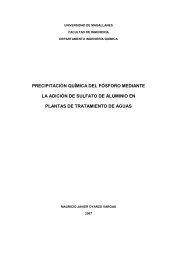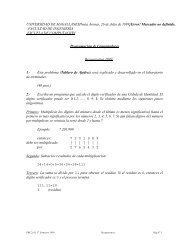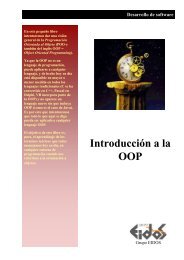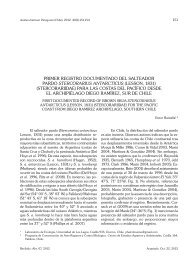Descargar Índice - Universidad de Magallanes
Descargar Índice - Universidad de Magallanes
Descargar Índice - Universidad de Magallanes
Create successful ePaper yourself
Turn your PDF publications into a flip-book with our unique Google optimized e-Paper software.
DIVERSITY, ECOLOGY AND TAXONOMY OF THE POLYCHAETES<br />
(ANNELIDA: POLYCHAETA) IN HONOR OF PROF. ERNST EHLERS.<br />
Motivation of the volume<br />
Given the current impact generated by human<br />
activities, biodiversity studies along the Chilean<br />
Pacific coast are a matter of high interest to scientists<br />
and <strong>de</strong>cision makers. Actually, biodiversity is<br />
an important tool for the <strong>de</strong>sign, conservation and<br />
management of marine protected areas (CONAMA<br />
2006; Salmo et al. 2000) as well as it is required<br />
for environmental impact evaluation and baseline<br />
studies un<strong>de</strong>r the environmental Chilean regulation<br />
(Buchmann et al. 2009).<br />
Actually, the marine Magellan ecosystem<br />
appears to be suitable for aquaculture. In fact, the<br />
Magellan area is un<strong>de</strong>r high pressure of a newly<br />
implemented salmon farming industry (Buchmann<br />
et al. 2006). In this sense, benthic diversity studies<br />
should have a high priority, because information<br />
about actual diversity patterns is urgently nee<strong>de</strong>d<br />
as baseline data for the recognition of future changes.<br />
However, the calculation of diversity in marine<br />
benthic communities is highly complex, because<br />
many supplies are required. We need, for example,<br />
to <strong>de</strong>velop high ecological information level and a<br />
well-known species inventory of the area. In the<br />
moment we lack in the Magellan area large-scale<br />
studies to update environmental and taxonomical<br />
information.<br />
In this context, polychaetes with more than<br />
300 <strong>de</strong>scribed species (Montiel et al. 2005) are the<br />
second most diverse invertebrate group in the Magellan<br />
benthic realm (cf. Häussermann & Försterra<br />
2009; Montiel et al. 2005; Montiel & Rozbaczylo<br />
2009). Paradoxically, scarce studies on taxonomy and<br />
ecology of this invertebrate group have been realized<br />
in the Magellan area up to now, thus un<strong>de</strong>rlining that<br />
such studies on polychaetes are urgently nee<strong>de</strong>d.<br />
Un<strong>de</strong>r this scenario, we would like to <strong>de</strong>dicate<br />
the second 2010 number of the Anales <strong>de</strong>l Instituto<br />
<strong>de</strong> la Patagonia (Volume 38, number 2) to Prof.<br />
Ernst Ehlers (1835–1925). He worked worldwi<strong>de</strong> on<br />
polychaete taxonomy and he was the first annelidologist<br />
studying intensively the Magellan polychaete<br />
fauna. In his monographs “Polychaeten Hamburger<br />
Magelhaensische Sammelreise (149 pag., 9 plates,<br />
Hamburg, 1897)” and “Die Polychaeten <strong>de</strong>s Magellanischen<br />
und Chilenischen Stran<strong>de</strong>s, (232 pag. 25<br />
plates, Berlin 1901)” he <strong>de</strong>scribed 36 new species<br />
from 50 Magellan sampling sites. Nowadays, these<br />
monographs are consi<strong>de</strong>red an important contribution<br />
to the actual knowledge of the polychaete diversity<br />
and zoogeography in the Magellan area.<br />
Aim<br />
The aim of this volume is to contribute to the<br />
knowledge of polychaete biodiversity in the Magellan<br />
marine system by publishing some new ecological<br />
(new distribution range of species and new studies<br />
areas) and taxonomical information (new records<br />
and taxonomical review) from areas not previous<br />
study to this group.<br />
Drs. Américo Montiel & Carlos Ríos<br />
Instituto <strong>de</strong> la Patagonia<br />
<strong>Universidad</strong> <strong>de</strong> <strong>Magallanes</strong><br />
Contribution to the volume in alphabetic or<strong>de</strong>r:<br />
Bremec C., V. Souto & G. Genzano 2010. POLY-<br />
CHAETE ASSEMBLAGES IN SW ATLANTIC:<br />
RESULTS OF “SHINKAI MARU” IV, V, X<br />
AND XI (1978-1979) CRUISES IN PATAGO-<br />
NIA AND BUENOS AIRES.<br />
Cañete J., M. Astorga, M. Santana & M. Palacios<br />
2010. ABUNDANCIA Y DISTRIBUCIÓN<br />
ESPACIAL DE SCOLECOLEPIDES UN-<br />
CINATUS BLAKE, 1983 (POLYCHAETA:<br />
SPIONIDAE) Y CARACTERISTICAS SEDI-<br />
METOLOGICAS BAHÍA LOMAS, TIERRA<br />
DEL FUEGO, CHILE.<br />
Hüne M. & G. Rivera 2010. CONTRIBUCIÓN<br />
DE POLIQUETOS (ANNELIDA: POLY-<br />
CHAETA) EN LA DIETA DE TRES ESPE-<br />
CIES DE NOTOTÉNIDOS (PERCIFORMES;<br />
NOTOTHENIOIDEI) EN LA REGIÓN DE<br />
MAGALLANES.


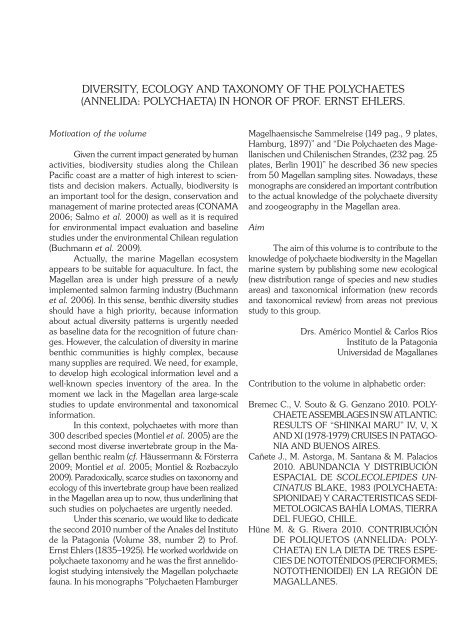

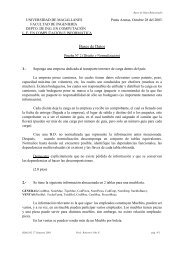

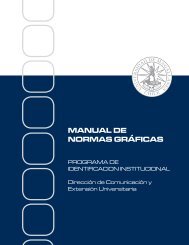

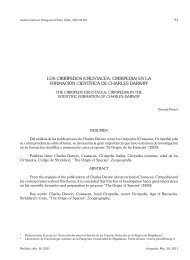
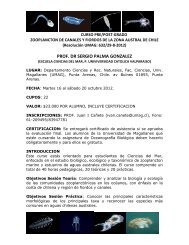
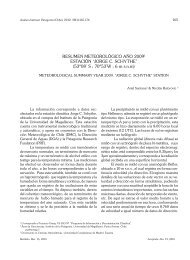
![Release Team[oR] 2001 [x] Database - Kataix Umag Cl](https://img.yumpu.com/43434642/1/184x260/release-teamor-2001-x-database-kataix-umag-cl.jpg?quality=85)
